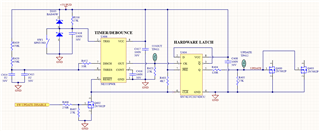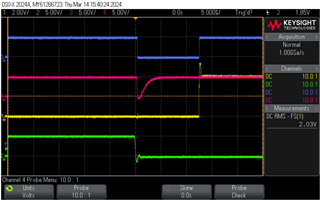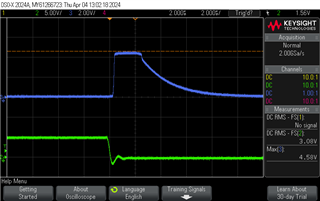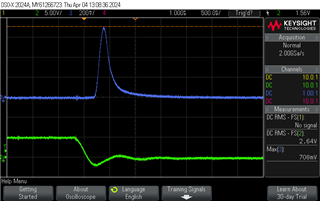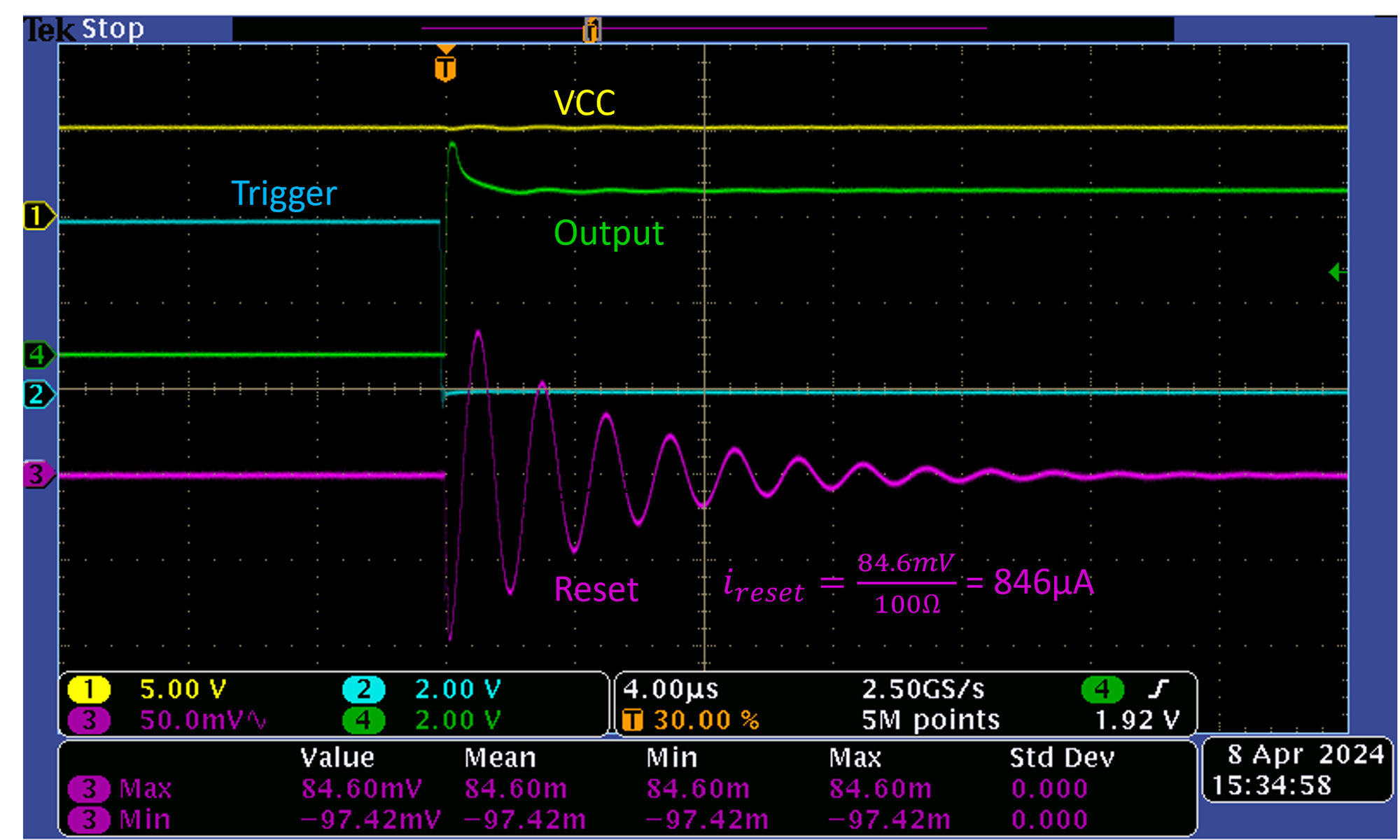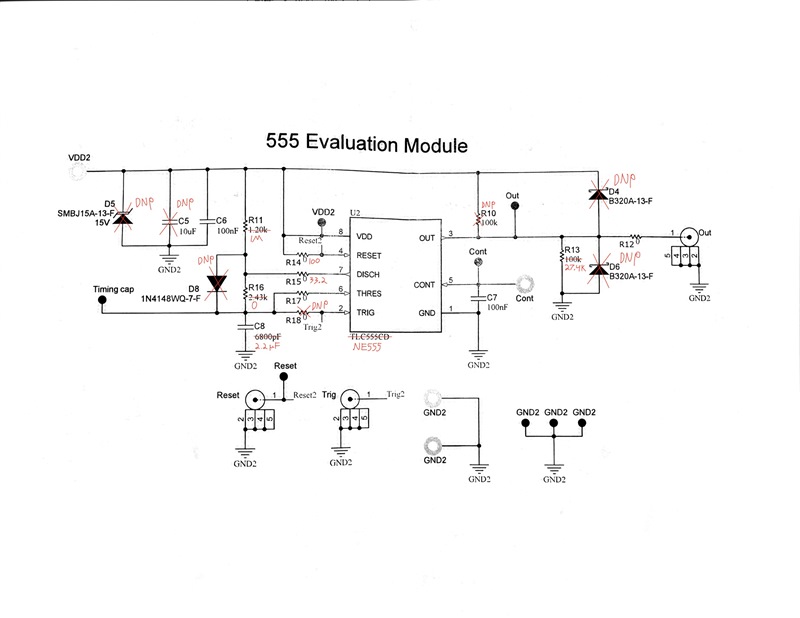Other Parts Discussed in Thread: LMC555, TLC555,
We using an NE555PWR chip (+ another IC) in a simple design to turn a momentary button into a latching button with a 2 second cooldown period between button presses. See attached condensed schematic.
We have found that the RESET line is being pulled low momentarily by the RESET pin when the button is pressed, even though there is a strong 5V pull-up present. This causes further downstream problems. We have replaced the part with a Philips NE555N and the issue goes away; that is to say the RESET pin does not sink large amounts of current momentarily.
We have tried multiple NE555PWR chips, and multiple boards. There are no power issues present. We have removed the FET Q402 and IC U404 from the circuit, leaving just the U406 555, and still the RESET line is pulled low momentarily by the U406-4 RESET pin. Voltage levels are not being exceeded.
We would like some help investigating why this issue is occurring please.


